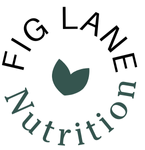Many people know that calcium is important for our bone and teeth health. But did you know it also plays a role in muscle function, as a neurotransmitter, hormone signaling, and more.

The recommended dietary allowance (RDA) for adults are[1]:
| Age | Men | Women |
| 19-50 years old | 1,000 mg | 1,000 mg |
| 50-70 years old | 1,000 mg | 1,200 mg |
| 70+ years old | 1,200 mg | 1200 mg |
However, the daily value for calcium, which the percentages daily value (%DV) on food labels are based, is 1300 mg[1].
Some good sources of calcium sources include dairy such as milk, yogurt, and Kefir and canned fish with the bone. All of which boast over 300 mg in a serving.
For someone who is trying to follow a plant based diet it can make it more difficult to meet those calcium levels with many of the top sources coming from animal or fish products. Fortunately there are several plant based calcium sources that have just as much or more calcium than a cup of 1% milk, and others that can give you a boost to 1000 mg.
Calcium contents of the foods below were determined based on a search on the USDA FoodData Central or Dietary Guidelines for Americans Food Sources of Calcium.
1. Tofu prepared with calcium sulfate
Serving 1 cup Calcium: 356 mg, 27.4% daily value making it an excellent source of calcium.
Tofu is not only a great source of calcium for someone who is plant-based but also protein.
Although soybeans get most of their calcium from being prepared with calcium sulfate, soybeans and other beans contain a natural amount of calcium as well.
Tofu also contains vitamin K, iron, and isoflavones which are a photochemical or plant chemical.
Isoflavones often get a bad reputation due to there similar looking structure to estrogen. However, they are safe and are associated with reduced risk of certain cancers and some studies show benefits for bone health as well [2].
2. Calcium fortified Orange Juice
Serving 1 cup Calcium: 349 mg, 26.8% of the daily value making it an excellent source of calcium.

Calcium fortified orange juice gets its calcium through fortification. Fortification is the addition of an essential nutrient that does not naturally occur in a food product. This is beneficial for both plant-based individuals or not who don’t or can’t drink regular milk. Calcium fortified orange juice is also fortified with Vitamin D just like milk which pays a role in calcium absorption.
Even if someone doesn’t drink juice, there are several other applications for this plant-based source of calcium. It can be added to marinade, dressing, or even frozen into ice pops.
3. Soymilk
Serving 1 cup Calcium: 301 mg, 23.2% of the daily value making it an excellent source of calcium.
As a Non-dairy alternative to milk, soymilk often holds the closest nutritional standard to the dairy containing beverage. It has a natural protein content and fortification with essential vitamins and minerals to bring the nutritional value close to cow’s milk.
As someone who has been dairy-free for 7 years now, you would think I would have tried it all. But I had not even tried soy milk for the first 5 of those 7 years due to the reputation it had for having an aftertaste. Turns out with many common brands food manufacturers in America have been able to get rid of or cover this after taste. So if you’re looking for a dairy alternative that is creamy and has protein give soy milk a try.
4.Cooked Collard Greens
Serving ½ cup Calcium: 134 mg, 10.3% of the daily value making it a good source of calcium.
Dark leafy greens like collard greens and the next item on this list are very nutrient dense, meaning they pack a powerful punch or nutrients for not a lot of food or calories for that matter.
Collard greens are often braised with meat however, they can also be sliced and sauteed, roasted to make crisps, or blended into a sauce like a pesto.
5. Cooked Spinach
Serving ½ cup Calcium: 123 mg, 9.5% of the daily value.

Spinach does contain calcium. However, it also contains oxalates which is a compound that can make it difficult to absorb or utilize nutrients like calcium and iron. Boiling the vegetable can help to remove some of the oxalates though.
However, even if your not boiling your spinach, it is still a nutrient dense food that offer several other nutrients other than calcium.
6. Corn Tortillas
Serving 2 corn tortilla Calcium: 120 mg, 9.2% of the daily value.
Corn tortillas are often treated with lime, not like the citrus fruit but rather food grade calcium hydroxide. This helps to break down the corn so it can be used to make a tortilla. It also provides corn tortillas with its source of calcium.
While calcium hydroxide is not the most absorbable form of calcium we still do absorb from corn tortillas[3].
7. Almond butter
Serving 2 Tablespoon Calcium: 111 mg, 8.5% of the daily value.
Almond butter is made from ground almonds which are naturally contain calcium.
Almond butter has several uses and although providing a different flavor it can often be used as an alternative to peanut butter.
Aside from it use as a spread, it can be used in baked goods, dressing and sauces or as a topping for a breakfast bowl of oatmeal or yogurt.
8. Cooked Bok Choy
Serving ½ cup Calcium: 93 mg, 7.2% of the daily value.
Naturally containing calcium bok choy is another vegetable that can help you meet your calcium needs. Additionally, it is low in oxalates.
Often cooked, this vegetable can be added to things like soups, stir-fried or sautéed to be eaten on its own. However, it can also be eaten raw to add a satisfying crunch to salads or slaws.
9. Chia Seeds
Serving 1 Tablespoon Calcium: 76 mg, 5.8% of the daily value.
Chia seeds have recently become popular for something called chia seed water, which is exactly as it sounds. Chia seeds after being in contact with liquid start to form a jelly-like substance. People have been soaking chia seeds in their water bottles overnight to make this chia seeds water.
While this does give you some calcium, it also has heart healthy fats, and a good boost in your fiber, there are many other ways to use chia seeds.
Chia seeds can be used in granola, chia seed pudding, overnight oats, smoothies, and as an egg replacement in baked goods.
Where Does the Plant-Based Calcium Come From?
Some foods like spinach and bok choy naturally contain high amounts of calcium. Others such as tofu and corn tortillas are processed with calcium or obtain it through nutrient fortification.
With different brands using different ingredients to process their foods this can lead to variations in calcium quantities. Make sure you check the food label for packaged goods to ensure it contains calcium you are looking for to help you meet your needs.
Calcium Absorption
As mentioned earlier, different sources of calcium have different bioavailability or abilities for humans to absorb it. Additionally, nutrients like oxalates can affect the use of calcium.
In addition to this, it is important to note that calcium needs vitamin D to aid in absorption. Many dairy products and dairy alternatives are fortified (adding something that was not originally there) with vitamin D. However, other plant based products that get their calcium in processing or naturally have calcium do not have vitamin D. This makes it important to get your vitamin D from other sources to support absorption.
Take Away
For those who are plant-based there are other sources of calcium aside from animal and fish sources like dairy or canned fish with the bones. Calcium can be obtained in the diet though certain vegetables, fortified foods and foods that get their calcium from their production. To help you meet your calcium needs it can be beneficial to get your calcium from a variety of sources as absorption and utilization of calcium changes depending on the source. Finally, it is important to make sure you are getting enough vitamin D as it is needed for calcium absorption in the GI tract.

Pingback: Baba Ganoush - Fig Lane Nutrition
Pingback: Top 13 High-Calorie Plant-Based Foods - Fig Lane Nutrition
Pingback: 13 Sources of Vitamin B12 for Plant-based Vegans - Fig Lane Nutrition
Pingback: Plant-Based Chipotle Sauce - Fig Lane Nutrition
Pingback: Plant-Based Grocery List [Dietitian Approved] - Fig Lane Nutrition